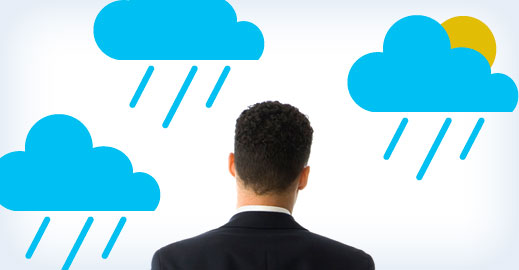What Sandy can teach marketers.
Nothing like a brush with a disastrous storm to bring important things into focus. And no time like the present to prepare for the next one.
Disaster preparedness can apply to marketers too. Here are three lessons that Sandy taught us:
1. Make the user experience consistent no matter what the screen size or device.
Without power and internet access, we found ourselves in our “mobile offices” looking for hotspots with our three devices – phone, tablet and laptop. Sometimes one got through and the others didn’t. And you know what was most frustrating? When a site – usually built only for desktops and laptops – was impossible to use on a smaller screen. G-r-r-r.
One response? Responsive web design. Easy reading and navigation with a minimum of resizing, panning, and scrolling—across a wide range of devices. Good for the user. Good for your brand.
2. Make the lemonade – and promote it – before everyone’s thirsty.
Sports clubs opened their showers. Banks waived fees. Battery companies deployed mobile charging stations. One enterprising restaurant chain let patrons use its dishwashers. Excellent lemonade from lemons, and pretty good PR.
But we had several days to prepare for the storm – and so do companies. So why not promote these services beforehand, while people still have power, rather than scrambling when they don’t? Think about what your firm might offer to people in need and arm them with a hotline before they need it. Better than good PR. A great way to attract (very grateful) customers, who are likely stay loyal.
3. Monitor Twitter and quash the rumors.
While Twitter can be a godsend during disasters, inaccurate tweets can do a lot of damage. They can raise false hopes, scare people and divert emergency resources. (One announced, deceptively, that the floor of the New York Stock Exchange had flooded.) It’s the main reason FEMA has a rumor-control page on its site.
But don’t wait for FEMA, or anyone else. Be vigilant. Wrong information about your company can spread quickly and the fallout can be lasting. As part of your preparedness plan, designate a team of watchdogs – a few who will be out of harm’s way – who monitor mentions 24/7, through TweetDeck or other listening tools. With Twitter Advanced Search, you can calibrate by words, hashtags, geo and more – so you’re listening to the right conversations.
So when the power’s out for many of your customers, use Twitter to keep them informed and current about all the positive steps your company is taking on their behalf. At the same time, take a page from the FEMA playbook. Post on your website clarifications of any false or misleading tweets immediately.
Come to think of it, pretty good advice even when the storm passes.
And here’s a way you can lend a hand to people still in need. Text REDCROSS to 90999. Every time you do, you’ll donate $10 to American Red Cross Disaster Relief.


 See what they have to say
See what they have to say